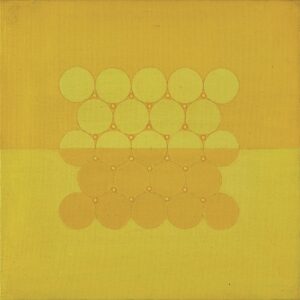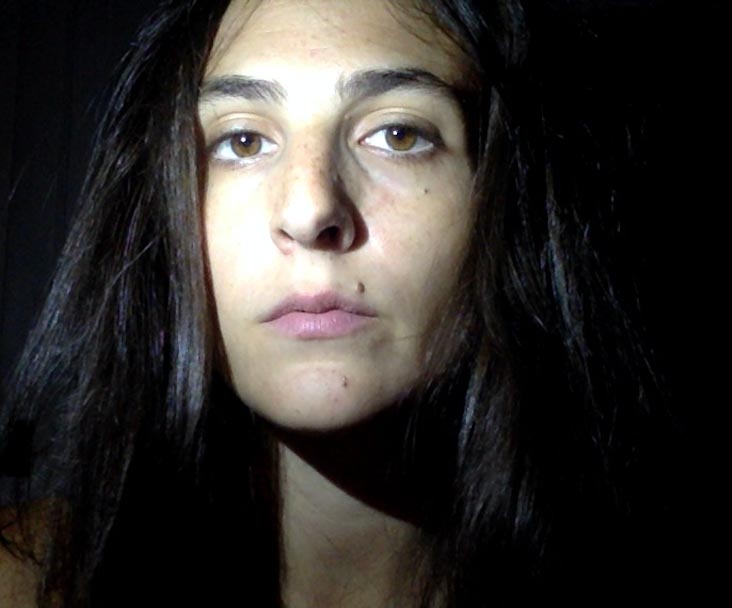The museum complex of Mantua reopens to the public, after a long closure, and, since October, it hosts two sensational exhibitions of contemporary art by two great artists: Gastone Biggi and Umberto Mariani. Two separate exhibitions that share a special, evocative venue: Palazzo Ducale in Mantua. While the ancient and renowned camera picta by Mantegna resists the contemporaneity, two completely new, yet known, dialogues grow beside it.
In the spaces of La Galleria of the palace in Mantua, the retrospective exhibition dedicated to Gastone Biggi, author of the Manifesto of the Abstract Realism, is hosted. Firfty art works create this rich exhibition that invites the audience to a constant confrontation with the natural space and the mental space, in the continuous search for a dialogue between realism and abstraction, which lead to a new vision of the contact of spaces of mind and nature.
The central theme is the color that shows the nature and that Biggi feels in his long trips around the world, between life experiences and sources of continuous inspiration: this is how the “Variabili” (Variables), “Ritmi” (Rhythms), “Cieli” (Skies) and “Campi” (Fields) series are born, followed by the environmental atmospheres of the “Luci” (Lights) and “Suite americane” (American suite) series. A long, expressive journey that is enclosed in a sort of case/journal, represented by the symbolic theme of the “Fleurs”, a kind of botanical spelling book that romantically reminds of Kandinsky – less geometric though and surely more “fauve” – who became the spokesman for a certain abstract art.
Once passed through the rooms of Biggi’s exhibition and crossed the romantic Giardino dei semplici, the visitor enters the folds of Umberto Mariani in the evocative rooms of the Appartamento della Rustica. Here, among the magnificent low relieves and the ancient wall paintings, a precious tribute to Mariani is exposed, to whom the Hermitage Museum is St. Petersburg has just dedicated a solo exhibition. A real transfiguration of reality into an imaginary setting where folds and drapes become interpreters of the works of art.
After visiting the exhibition, the words of the curator Giovanni Granzotto sound exhaustive: “Unlike those of Leibniz and Deleuze, unlike the Greek and Roman drapery and the baroque as well, Mariani has firmly chosen a personal way for “his fold”, a way very close to a metaphysical and absolute dimension, a way where the interferences of the contemporaneity, always alive and present in his work, quieten and shape into the big and welcoming river that is the Fold. For him, this is the World, with no distinction left between Classic and Baroque.”
The title of the exhibition – “The fold. Leibniz and the Baroque” – therefore seems a clear tribute to the essay of the French philosopher Gilles Deleuze, a text from 1900 that, moving from the theories of the German philosopher and going through the most different aspects of the baroque culture, tries to define the building of the soul and of the modern experience through the metaphor of the fold. The exhibition at Palazzo Ducale wants to be a homage to the several variations of this research, through the symbolism but also the concreteness of the fold, its plasticity and lightness, intended as an ideal – but also very real – bridge between the classic, baroque and current formal culture.
In the architectonic beauty of the Appartamento della Rustica the folds of Mariani stand out like actual curtains that create the theatre of an endless comedy, at times tragic, depending on the contemporary scene for which the curtain leaves room.
The exhibition Gastone Biggi. Il tempo della natura, gli spazi della realtà, curated by Giovanni Granzotto and Leonardo Conti, organized in collaboration with Fondazione Biggi, chaired by Giorgio Kiaris, and the exhibition Umberto Mariani. Omaggio a “La piega. Leibniz e il barocco”, curated by Giovanni Granzotto with texts in the catalogue by Silvia Ronchey and Dimitri Ozerkov, are both organised by Il Cigno Edizioni (Rome) in collaboration with Villaggio Globale International.
Info:
Gastone Biggi. The time of nature, the spaces of reality
Umberto Mariani. Tribute to “The fold. Leibniz and the Baroque “
Until 6 April 2021
Complesso Museale Palazzo Ducale di Mantova
Tuesday-Friday: 8.45am to 7.15pm (last admission 6.30pm)
Monday: from 8.45am to 2.00pm (last admission at 12.40pm)
Closed: Monday afternoon, Saturday and Sunday.
Cover image: Umberto Mariani. Tribute to “The fold. Leibniz and the Baroque”, installation view at Palazzo Ducale, Mantova
 Gastone Biggi, Variabili policromi, Variabile giallo 6, 1973, vinyl on canvas, 50 x 50 cm. Courtesy Gastone Biggi Foundation
Gastone Biggi, Variabili policromi, Variabile giallo 6, 1973, vinyl on canvas, 50 x 50 cm. Courtesy Gastone Biggi Foundation
 Gastone Biggi, Luci, Suite Americana Terza (New York) Manhattan light, 1990, vinyl and wax pastel on canvas, 100 x 100 cm. Courtesy Gastone Biggi Foundation
Gastone Biggi, Luci, Suite Americana Terza (New York) Manhattan light, 1990, vinyl and wax pastel on canvas, 100 x 100 cm. Courtesy Gastone Biggi Foundation
 Umberto Mariani, Untitled, 2011, vinyl and sand on lead foil, cm 60,5 x 80,5
Umberto Mariani, Untitled, 2011, vinyl and sand on lead foil, cm 60,5 x 80,5

Author and journalist from Treviso. She has published Girini with which she won the Mazzacurati-Russo award (d’if, 2012), Club dei visionari (Di Felice, 2014), Balena (Prufrock spa, 2014), La susina (d’if, 2015) and the audiobook Nella notte cosmica (Luca Sossella, 2016).






NO COMMENT